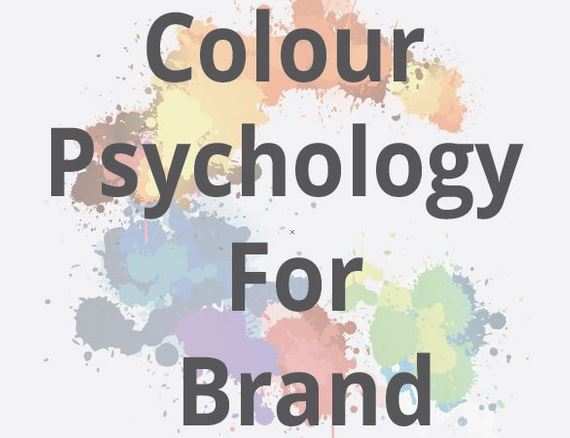Color psychology is used extensively in almost all aspects of design and it’s no big secret. Starting from the colors used on brand logos and website design to day-to-day grocery items, color is an important component that can convey a specific message to users.
Our eyes send a message to a region called the hypothalamus in the brain which, in turn, sends signals to the pituitary gland and then further onto the thyroid glands. This signals the release of hormones which in turn cause fluctuations in our mood, emotion and therefore as a result, our behavior.
Science tells us that color evokes emotions and this can result in negative, positive or mismatched feelings. According to Kissmetrics, all it takes is just 90 seconds for a site visitor to form a judgment or an opinion. In addition to that, 62-90% of that interaction is determined solely by the color of a product.
Branding Color Psychology:
Branding color psychology is the study of how colors impact the perception and emotional response of consumers towards a brand. Colors have the power to convey specific emotions, values, and messages, making them a crucial element in the overall brand identity. Different colors evoke different feelings; for instance, blue is often associated with trust and professionalism, while red can signify passion and energy. Understanding the psychological impact of colors is essential for businesses aiming to create a brand identity that resonates with their target audience and communicates the desired message.
Psychology of colors in branding, is a strategic and psychological move that goes beyond mere aesthetics. Depending on cultural background and personal preferences, each and every color means something to every person.
Color psychology in design is affected by individual perceptions as studies have shown. How the color is perceived is also affected by Societal considerations such as gender. Recent studies have found that It’s not only the color itself that makes an impact, but it’s also about how appropriate the user feels the color is used by the brand.
Influence of Colors in Branding and Consumer Behavior:
Branding colors wield a profound influence on consumer behavior, and savvy brands leverage this power to establish strong connections with their audience. Each color carries its own set of emotions and connotations. For instance, red may evoke a sense of action, urgency and passion, while blue may instill trust and reliability. Understanding the psychology behind colors allows brands to shape perceptions and elicit specific responses from consumers. Whether it's creating a sense of excitement or fostering a feeling of calm, the strategic use of colors in branding can significantly impact how consumers perceive and engage with a brand.
Using Color Theory in Branding for Better Recognition:
Color theory in branding serves as a guiding principle for creating a cohesive and recognizable brand recognition. Consistency in color usage across various brand elements, such as logos, packaging, and marketing materials, enhances brand recognition. This brand recognition, in turn, fosters trust and loyalty among consumers. Brands often employ a primary color palette associated with their identity and values, supplemented by secondary and accent colors for versatility. By adhering to branding color psychology & color theory principles, brands can carve out a distinctive visual identity in the minds of consumers, making them easily identifiable in a crowded market.
Determining a Color Scheme for your Brand
Triadic
Triadic is the most basic and balanced method, it uses color vibrancy and complements. You can select any three colors Using the 12-step color wheel which are located 120 degrees away from each other for background, navigation, and content.
Compound (Split Complementary)
Split Complementary is a little more difficult and to get it right, one may have to experiment, but if it’s done well it can be very effective. The compound concept uses four colors – two complementary pairs (across on the color wheel) and two contrasting pairs (near on the color wheel).
Analogous
The Analogous method focuses only on complementary colors and one should take care when deciding what they want the scheme to say to the user. since it highlights the vibrancy of the chosen colors, it can be a lot as the colors are essentially exaggerated.
- Background color – The black background denotes excellence, class, formality and “corporate”. When considering a site which provides mentoring, excellence is something that you would surely want to convey.
- Button colors – for the CTA buttons The site uses red buttons because they stand out clearly against the black background in order to encourage sign ups. For less important buttons Black is used with a white border.
- Text color – White provides an all-important contrast For the text, while still matching the color scheme. to encourage users to scroll down The icons outlined in white are placed right on the fold.
The more freedom you have in choosing your color scheme, the better. In fact, artists and designers have an understanding and utilize this power of colors to invoke a mood/feel to the audience. Given below, is a snippet of what different colors project in the Color Psychology Spectrum.
White: Cleanliness, Purity, Simplicity | Yellow: Happiness, Warmth, Caution | Orange: Affordable, Creative, Fun Red: Action, Passion, Danger | Pink: Gentle, Romantic, Grateful | Purple: Expensive, Mysterious, Spiritual | Blue: Authoritative, Serene, Dignified | Green: Renewal, Healing, Money | Brown: Calm, Natural, Serious | Grey: Corporate, Practical, Somber | Black: Classic, Formal, Bold.
For more details on how to use the branding color psychology for your brand, contact us today. Our design experts will get back to you.

For more details on how to use the color psychology for brands, leave your queries in our comment section below. Our design experts will get back to you.




